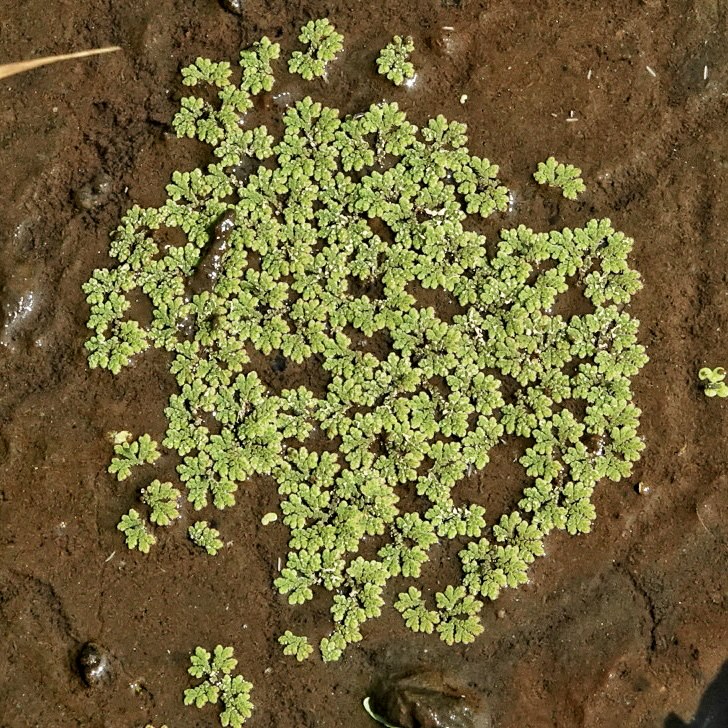
Although I had read about these interesting, and rather beautiful, tiny ferns in the family Salviniaceae (water ferns), I had never knowingly found them before yesterday. But recent posts by my friends Michael Palmer and David Wagner spurred me to go looking for them, and lo and behold, I found a small patch (the first of hundreds) of these smallest of all ferns, on the first section of watery mud I encountered at the small pond at the mouth of Burnt Bridge Creek in Vancouver, Washington, although I never did find the broad, dense mats for which this species is known.
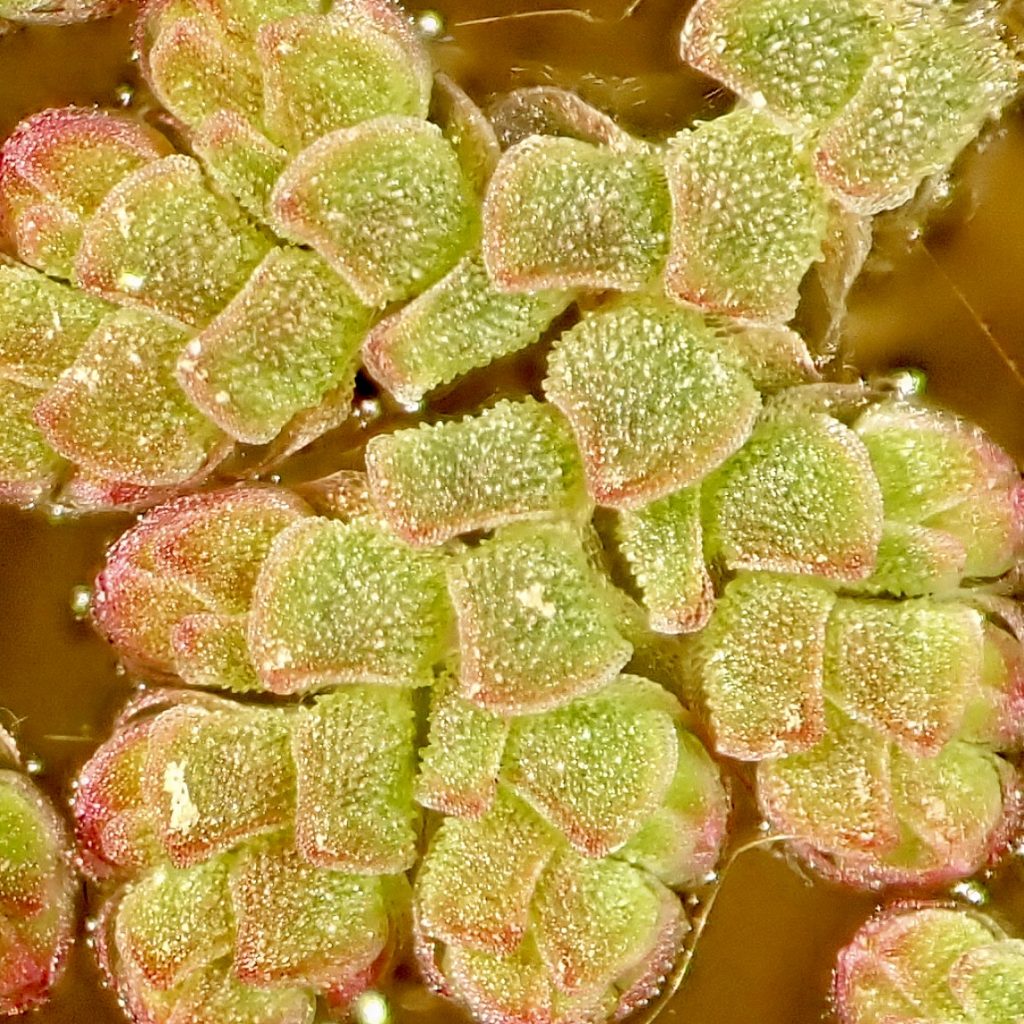
Common names include fairy moss, duckweed fern, Pacific azolla, red water fern, water velvet, and my personal favorite, Pacific mosquito fern, although until this research I thought that they were called that because they are mosquito sized ferns growing in mosquito habitat. It turns out that the name is due to the fact that the mats can grow so dense that allegedly mosquito eggs cannot penetrate them, or that the larvae allegedly cannot emerge through them to breathe. Neither of these ideas are probably true all of the time, but there could well be at least some reduction in mosquito reproduction and larval survival in areas with dense mats of Azolla filiculoides.

Pacific mosquito fern (and in fact all Azolla spp.) have an amazing adaptation for meeting their nutritional requirements. There is an ovoid space in the bottom of the upper (dorsal) leaf lobe that is filled with their symbiotic partner, the cyanobacteria Anabaena azollae, which acts to fix nitrogen from the air, converting it to ammonia to feed the plant. When the plants die back in winter this nitrogen is then released into the environment and acts as fertilizer for other plant life. Some consider Azolla spp. to be super-organisms, because this is the only known case of a plant transmitting its symbiotic partner into the next generation via reproduction, in this case as part of the spore. Other organisms that utilize symbionts, like Gunnera sp., Cycads, and lichens, must ‘meet up’ with their symbionts after the host has germinated. This relationship has been going on for at least 80 million years.
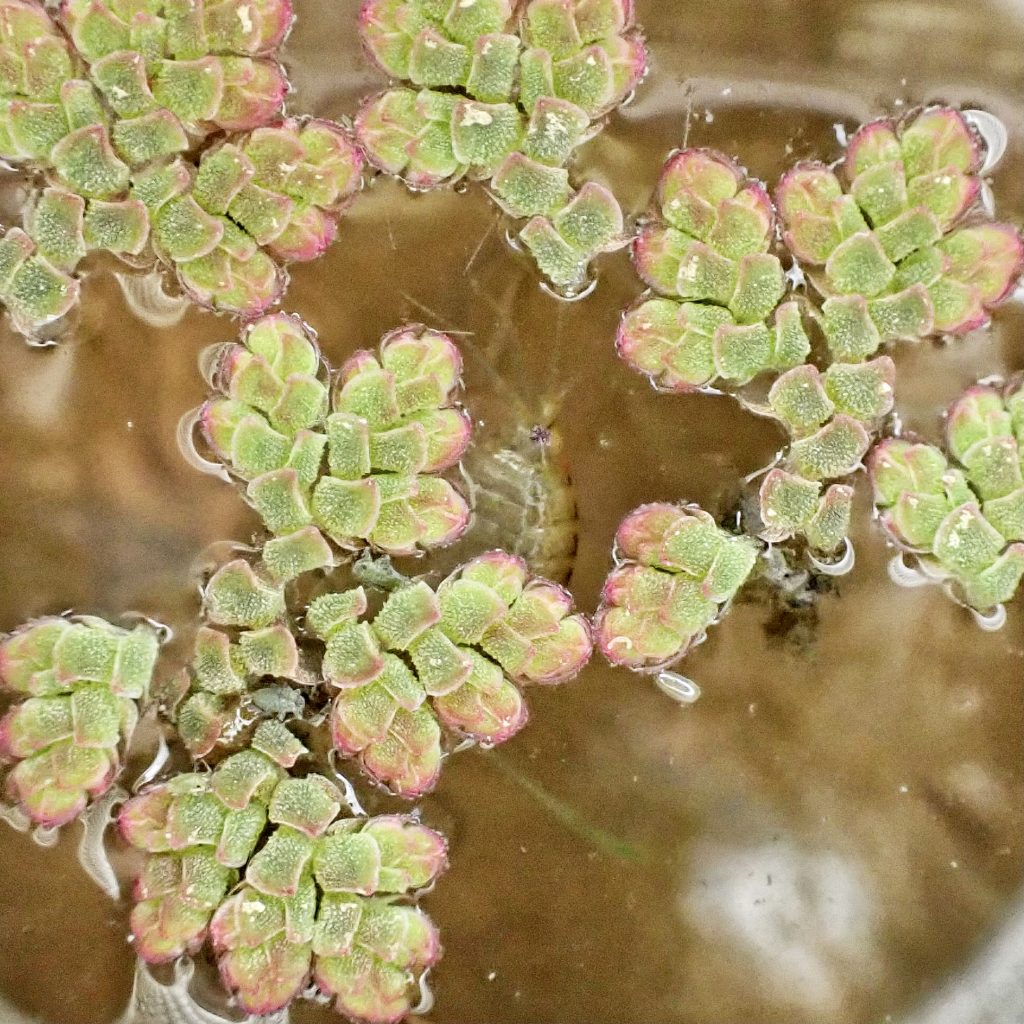
Though the mechanism was probably not understood then, Asian rice farmers as far back as 7,700 years ago noticed the positive effect of Azolla on their rice yields, and a separate agriculture of Azolla inoculates was born to meet the demand, since the paddies had to be re-seeded with the stuff each spring after the winter die back. Once the mechanics of this relationship between the ‘green manure’ of mosquito ferns and rice production became better known in the early 20th century the practice eventually became almost universal, and in the early 1960s Azolla filiculoides became the Azolla of choice for most rice farmers because of its resistance to cold temperatures.
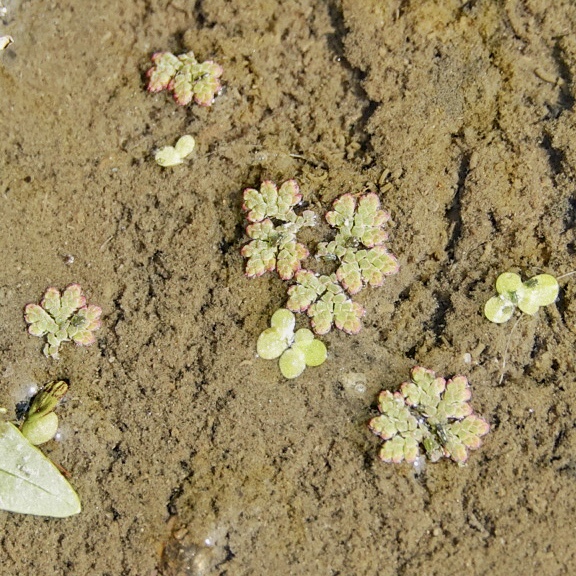
Besides fertilizing rice paddies Azolla spp. are now being farmed to provide feed for livestock, and even humans. It can double its mass in just a few days under good conditions, and is highly nutritious, with 25-30% protein by dry weight, vitamin B12, beta carotene, amino acids, and calcium, iron, magnesium, and a host of other minerals. And after harvesting it can also be used to to bulk up compost and fertilize terrestrial crops. But in some places Azolla filiculoides has become a noxious weed, because its blanketing of a body of water blocks light and oxygen from reaching beneath the surface, which can starve and suffocate the lifeforms below.
One of my readers just reminded me that it has been hypothesized that an Azolla bloom in the Arctic Ocean about 50 million years ago may have sequestered enough carbon to reverse the greenhouse effect on Earth that lead to a warm enough climate that reptiles and palm trees lived at the Poles. For more information, check out this link. Thank you Duncan Thomas!
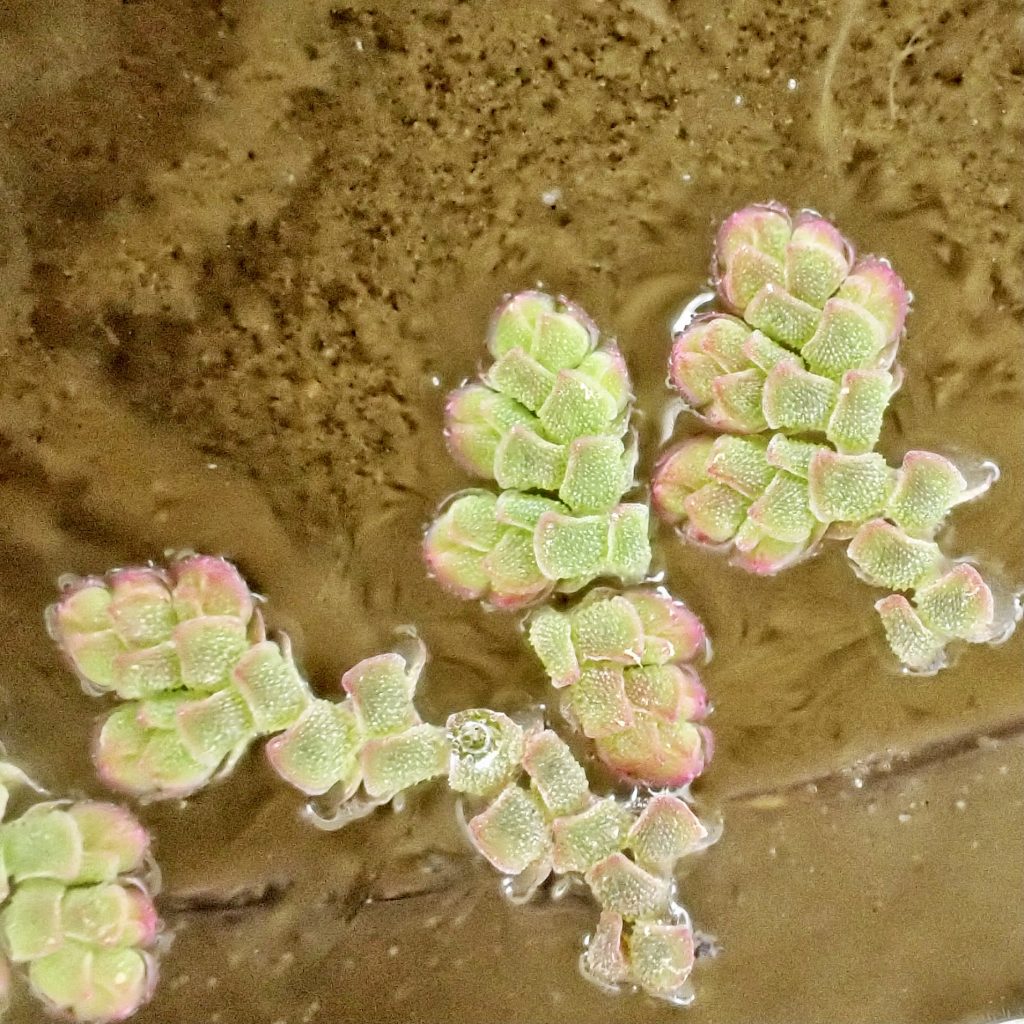
Description– Plants are floating or laying flat on liquid mud, forming mats which may be very dense and reddish in color (they are green in shadier spots but turn red in direct sunlight or the presence of high nitrogen levels because of the production of anthocyanins, a type of pigment that is responsible for the reds, blues and purples of many fruits); leaves are tiny (.6-2mm), alternate, with two lobes, lower lobe hollow for floatation, submerged, upper lobe red or green with hyaline margins; dorsal surface of leaves with single called, elongated trichomes, visible only under at least 40x magnification.
Similar species–Azolla microphylla has trichomes that are mostly 2-3 stacked cells, and are not elongated.
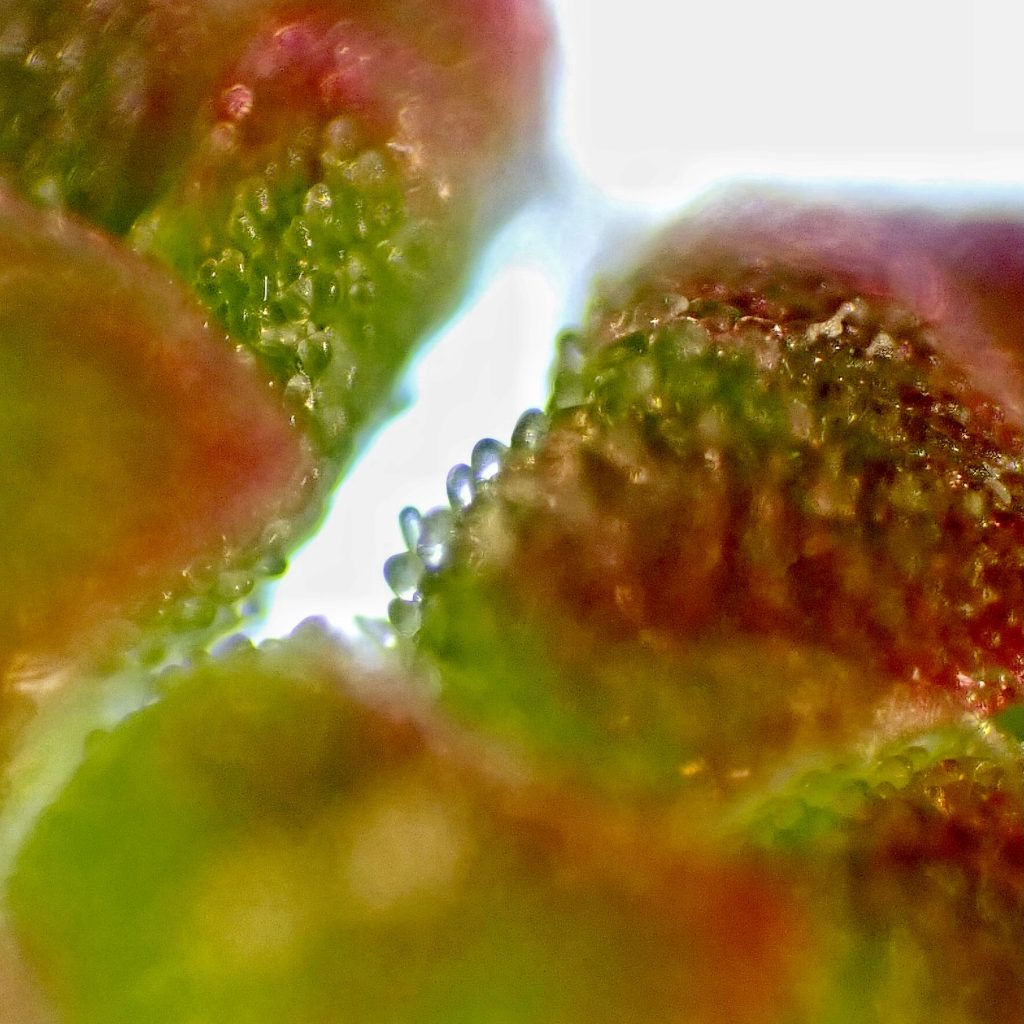
Habitat-Ponds, sloughs, slow moving streams, up to 5,000’ elevation.
Range– Temperate regions around the world; region wide in appropriate habitat, though mostly absent from the coldest and driest parts of the interior.
Reproductive timing-Reproduces mostly by pieces breaking off and starting new plants, but if they form sporocarps it is usually in late spring and summer.
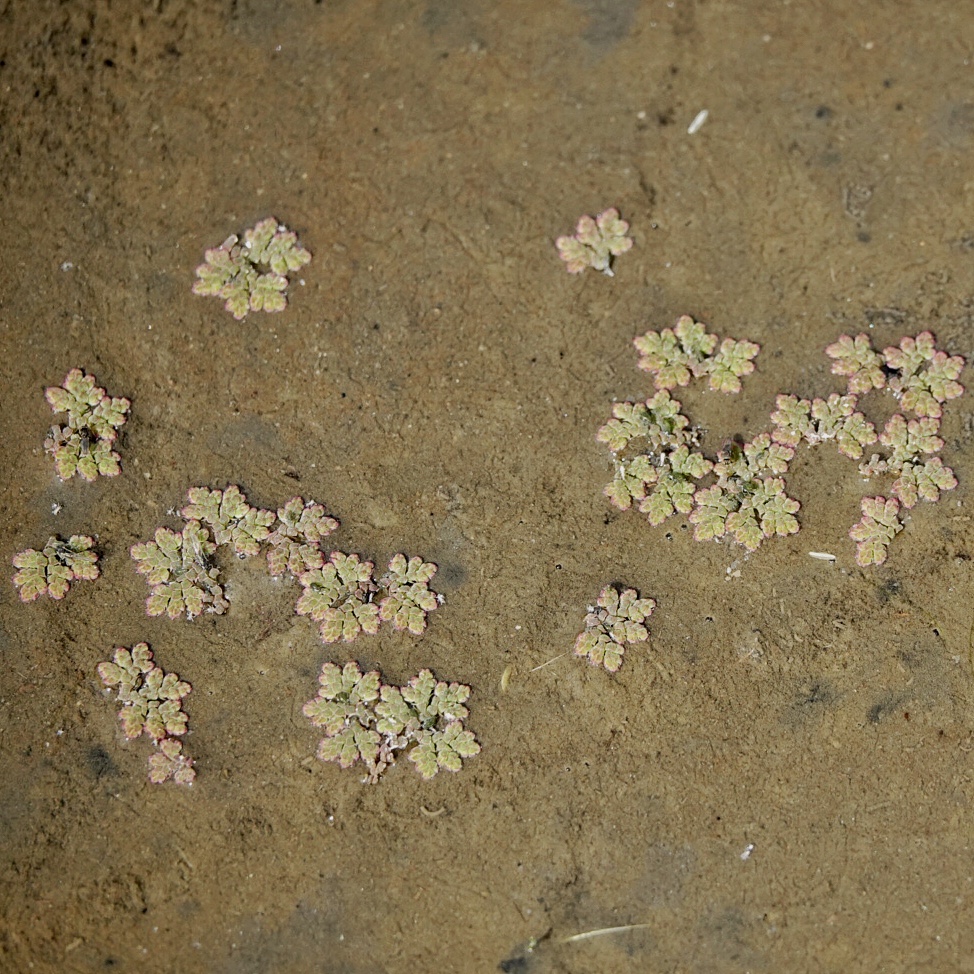
Eaten by-Geese, swans, herbivorous ducks, larval amphibians, carp, snails, and many other herbivorous aquatic invertebrates, including the Azolla Weevil (Stenopelmus rufinasus), feed on this plant; when it dies off in the late fall/winter it’s decomposition feeds a multitude of detritus and filter feeding aquatic invertebrates and young fish.
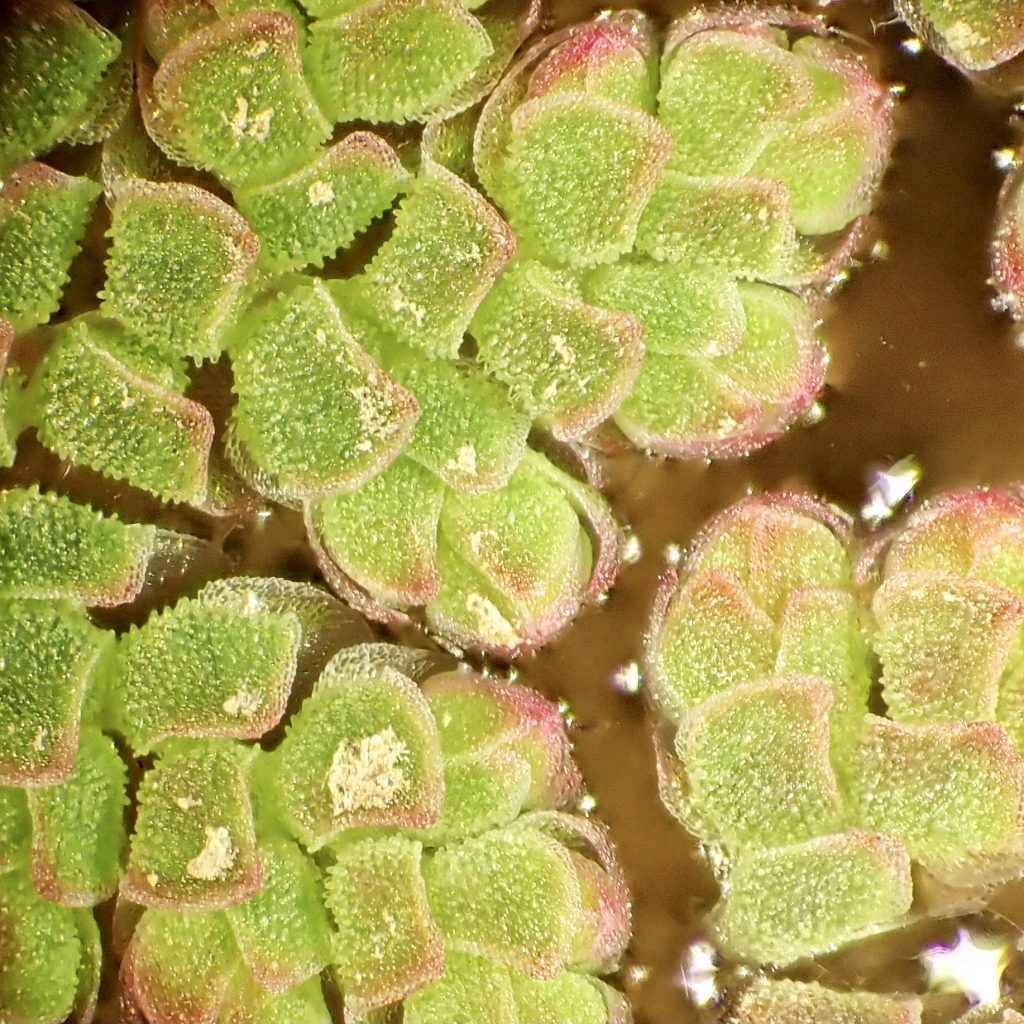
Etymology of names– Azolla is from the Greek words for ‘dry to kill’, alluding to this plant’s inability to survive desiccation. The specific epithet filiculoides is from the Latin for ‘fern like’, which seems slightly disingenuous since it is, actually, a fern.
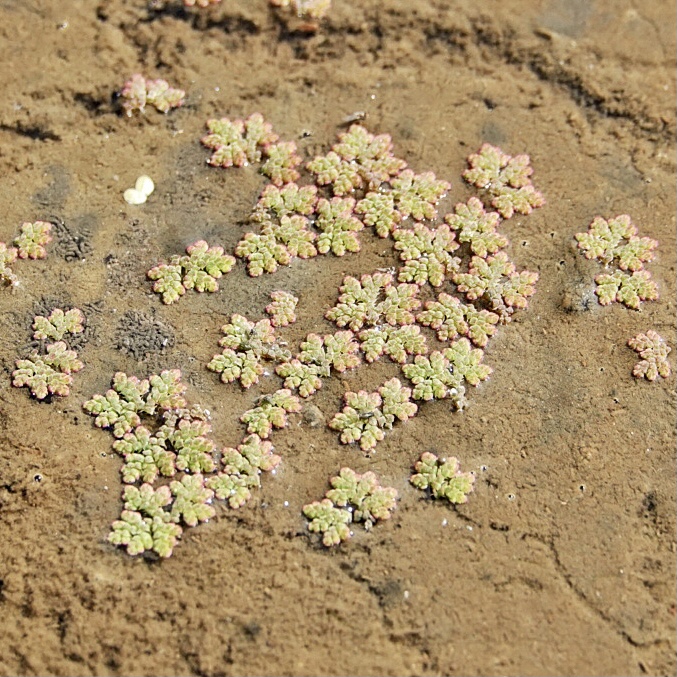
https://www.fs.fed.us/wildflowers/plant-of-the-week/azolla_filiculoides.shtml
https://www.cabi.org/isc/datasheet/8119
http://theazollafoundation.org/azolla/azollas-use-in-the-east/
OregonFlora Azolla filiculoides
https://en.m.wikipedia.org/wiki/Azolla
https://www.milkwood.net/2012/08/06/azolla-water-fern-as-protein-rich-animal-feed/
https://en.m.wikipedia.org/wiki/Sporocarp_(ferns)
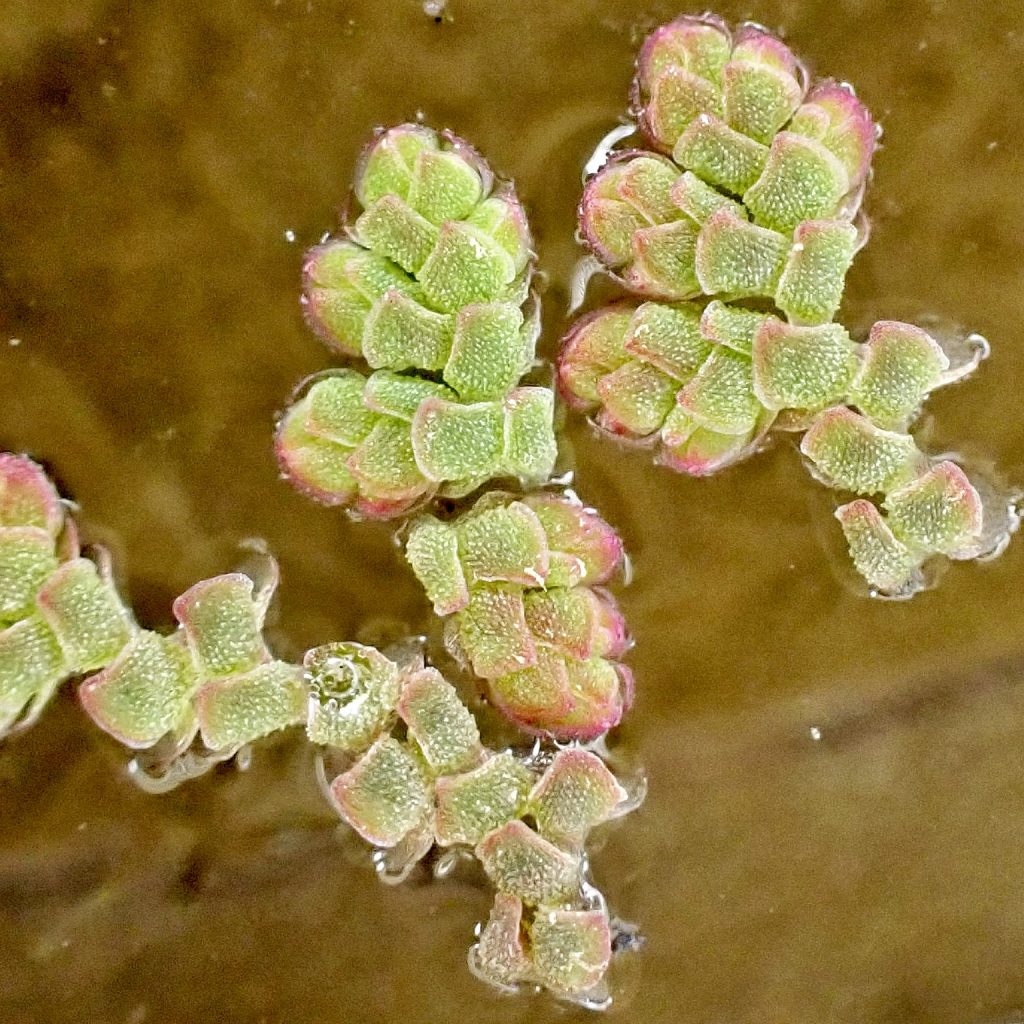
Although still just a hypothesis, the Azolla event is fascinating, and the fossil evidence for lots of Azolla in the Arctic Ocean is sound!
https://en.wikipedia.org/wiki/Azolla_event
Yes, I read about that! Thanks for reminding me!
Thanks again! I added some content and that link about this phenomenon, and gave you a shout out.
Just want to express my thanks again!
Your blog is so comprehensively informative!
I love it, can’t wait for the nxt installation and really longing for it to become a searchable web site.
Is there anything that can be done to accelerate reaching the latter goal?
Jochen
Thank you! I’m not sure what you mean, Jochen. There is a search feature built in to it, and one can peruse the gallery to find likely suspects for identification. As far as turning it into an app, well I need a lot more content first. I’ll probably start talking to tech people after I get 1000 profiles, and I’m only at 333 now, so probably at least another year and a half. Sure am happy to hear you get such enjoyment from it!!!